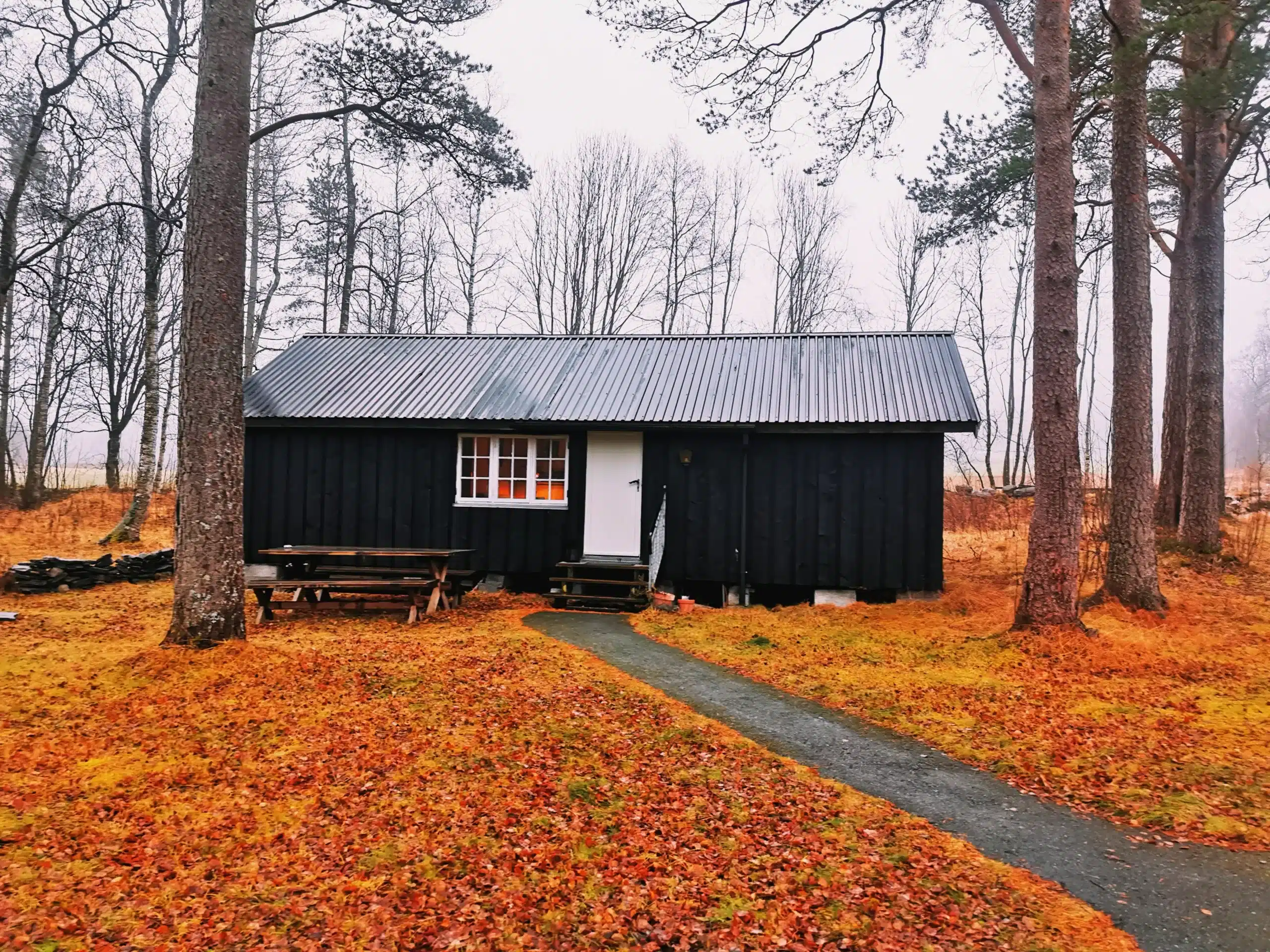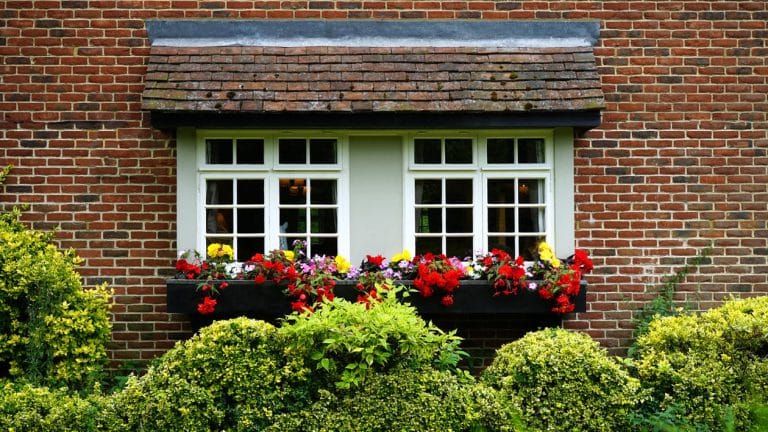For most Americans, autumn means falling leaves, cozy fires, and pumpkin-spice everything. For homeowners, the arrival of fall also means it’s time to get cracking on some home maintenance tasks.
Put these items on your to-do list in the coming weeks.
Conduct a Home Safety Check
Level of Difficulty: Easy
Of course, it’s important to be vigilant about home safety year round. But autumn is a great time to double check your home for safety hazards.
Start indoors. Check on your smoke and carbon monoxide detectors. Many experts recommend checking your detectors and changing the batteries each time you change your clocks for Daylight Saving Time.
In the kitchen, a grubby range top or greasy oven can be a fire hazard. Clean those now, before you do any heavy-duty holiday cooking. (Check out some more fire safety tips here.) From there, check each room of your home for potential safety hazards, and resolve issues as you find them. Check appliances for frayed wires. Make sure you’re not overloading outlets. Secure loose floorboards or floor tiles.
Next, head outdoors. Check for cracks in your driveway, uneven paving stones, rickety stairs, wobbly handrails, or anything else that might trip you up walking to, from, or around your home.
Fix anything that could pose a hazard in wet or icy conditions now, while the weather’s still good. While you’re at it, take a good look at your fences, retaining walls, or other outdoor structures, and make a note of any issues that need to be addressed. Repairing structures on your property in a timely fashion means small problems won’t become larger, more expensive issues in the future.
Seal the Leaks
Level of Difficulty: Moderate
As the weather turns cooler, you want to make sure that you’re keeping the elements outside. Start by checking your windows and doors for drafts. Add caulk or weatherstripping to keep warm air in and cold air out.
Don’t forget to seal up cracks on the exterior of your home, too. A cool, dry day is ideal for outdoor sealing projects. A sunny afternoon spent with a caulking gun can pay off in lower energy bills for the winter.
Most of the time, cracks in your foundation don’t indicate a structural issue (though it doesn’t hurt to check with a professional, just to be sure.) Still, unsightly cracks can be an entry point for pests or moisture. So it’s worth the effort to seal foundation cracks properly. (We like this tutorial from This Old House.)
Check the Roof and Clean Your Gutters
Difficulty Level: Moderate
Depending on how comfortable you feel on a ladder, this may be a task to handle yourself, or it may be a job to leave to the professionals.
Either way, it’s important to clear debris from gutters and make sure they’re draining properly. Gutters that aren’t draining water away from your home can cause water to pool near your foundation, putting your home at risk. Clogged gutters or leaky gutters can lead to serious water damage to your roof or walls and costly repairwork. And if that weren’t enough, gutters filled with decomposing leaves are fertile breeding grounds for mold and insect infestations.
As long as you clean your gutters regularly, clearing just a year’s worth of leaves and dirt shouldn’t be too difficult. If it’s been awhile since you’ve cleaned the gutters, it may be worth it to call in the professionals this year, and resolve to do better in the future.
While you’ve got the ladder out, take a look at your roof and check for loose shingles or any other signs of damage. If you’re not the hop-on-a-ladder-type, a good pair of binoculars can give you a pretty decent view of your roof, even from the ground.
Put Away Your Summer Stuff
Level of Difficulty: Easy
Your patio chairs might still be useful for sitting around a fire pit roasting marshmallows with friends on a brisk fall night. And for the brave and bundled-up, fall grilling may well be an option. But at some point in the coming weeks, your outdoor furniture should probably go into hibernation.
Put away outdoor furniture (or at least your outdoor cushions and umbrellas) before they spend a winter covered in snow. Drain and/or cover pools and hot tubs. If you’ve got a grill, clean it one last time and cover it until the weather warms up again. Wind up hoses and cut off the water supply to outdoor faucets.
If you’ve got a lawnmower, think twice about storing it with a half-full gas tank. Leaving gas in your tank can lead to trouble with your carburetor come spring time. You can add fuel stabilizer and drain the tank yourself, or take it to a professional to be serviced.
Gear up for Winter
Level of Difficulty: Easy
The best time to stock up on firewood, rock salt, canned soup, hot cocoa mix, or any other wintertime needs is in the fall. That is, well before you might need supplies to ride out inclement winter weather. Save yourself the hassle of elbowing strangers for the last can of beans at the supermarket in the hours before a big storm. Get your winter supplies ready in advance.
Your exact winter supply needs will vary depending on where in the country you live. Your list is probably longer if you live in Denver than it might be if you live in Daytona Beach.
Still, it’s a good idea for everyone to have non-perishable food, flashlights and a radio with fresh batteries, and enough water for each member of your household to go through about a gallon a day for a several days. Check expiration dates on supplies you’ve got on hand already, and top off existing stores with new inventory. Don’t forget to set aside supplies for your pets.
Get Your Heating Systems Checked Out
Level of Difficulty: Call in the Professionals
Have your HVAC systems professionally serviced before it’s time to turn the furnace on. Skipping regular servicing for your HVAC systems is like skipping dental cleanings or oil changes. You might save a few bucks now. But you risk dealing with expensive and painful issues later that could have been prevented entirely. A professional HVAC technician can alert you to developing trouble before it becomes a major problem.
Plus, servicing can prolong the life of your heating systems and ensure that components are running efficiently, saving you money on your energy bills.
If you’ve got a fireplace, have your chimney inspected and cleaned each year, too. Creosote build up in a chimney is a serious fire hazard.
Deal with the Leaves
Level of Difficulty: Easy
Unless you’ve got an especially fussy HOA, raking the leaves off your lawn after they fall from the trees is technically optional. Leaves will eventually decompose on their own.
That said, big piles of leaves can smother the lawn directly underneath, leaving unsightly bald spots in your yard come spring. And leaves make excellent mulch and compost material, which means it’s a shame to waste them.
If you’re comfortable leaving the leaves in the yard, use a lawnmower with a mulching attachment to cut fallen leaves down to dime-sized pieces. You may need to make more than one pass across your yard. But you can leave the mulched pieces in the yard to feed the soil. You’ll be rewarded with a lusher lawn next year. (You can also bag the mulched pieces and spread them in your flower beds for a tidier look.)
If you’d rather not mess with mulching, you can definitely rake the leaves off the yard and use them for compost. Or, find a local organization to take those leaves off your hands.
Do you have kids? If they’re big enough to hold a rake, you can put this action item on their to-do list. Remember, raking leaves builds character!
Wait On: Pruning Healthy Trees and Shrubs
Level of Difficulty: Moderate, But That’s a Next-Year Problem
Here’s a home chore that can wait until after the New Year: pruning healthy trees and shrubs.
It can be tempting to add pruning to your fall yard tasks. Once the leaves are gone, it’s easy to see growth that ought to be trimmed back. And you’ll be out in the yard anyway, raking leaves and mulching and putting the patio chairs away.
But it’s better to wait until mid-to-late-winter when your plants are dormant to do any serious pruning. Hold off on that impulse to trim until later, and you’ll be rewarded with healthier growth in the spring.
Note: this advice does not apply if you have dead branches threatening your roof or windows. If that case, call your local tree trimming professionals and take those dead branches down right away. You’ll want to take care of those dead branches before a fall thunderstorm or heavy snowfall takes them down for you.
Knocking out some home maintenance chores may not be the most fun way to spend an autumn afternoon, but a little bit of maintenance now can keep small issues now from becoming big problems down the road. Ready for more tips? Check out these tips for all new homeowners.






